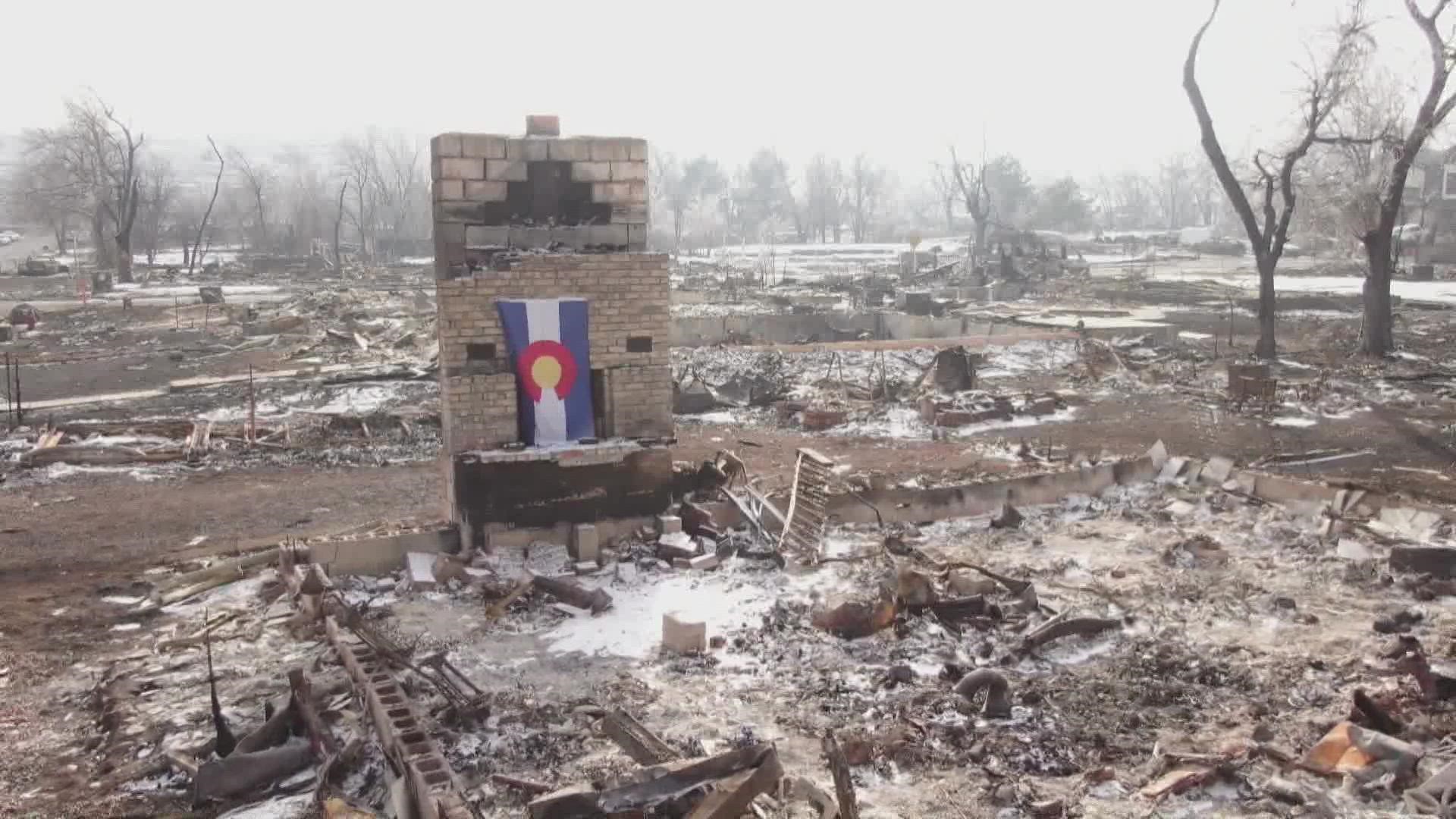BOULDER COUNTY, Colo. — Nearly six months after the Marshall Fire, the agencies involved have released an after-action report.
The Marshall Fire Operational After-Action Report was quietly posted on the town of Superior website on June 14. It was also posted on a Slack channel for Marshall Fire survivors, according to a survivor who forwarded the report to 9NEWS.
The report is not overly critical of the Marshall Fire response, but does list dozens of recommended changes to be better prepared before the next emergency.
The after-action plan lists what went well for each agency, followed by a list of areas that need improvement. Those areas that need improvement are broken down by topic, issue, recommendations, agency responsible, person responsible and timeline of when the recommendation needs to be completed and implemented.
According to a spokesperson for the Boulder County Sheriff's Office, the after-action report is designed to be a review document to help the responding agencies take a retrospective view on what took place and how to make improvements. The spokesperson said the multiple jurisdictions involved in the Marshall Fire response came together to produce the joint report.
Each agency is taking the report to its board of directors or elected officials to review, the spokesperson said. Boulder County is still working on that process, but plans to have it on their Marshall Fire website this week.
Boulder County
The first section, which covers county resources (county fire agencies, the Boulder County Sheriff's Office and the 911 Communications Center), lists 24 total recommendations.
- Fire response - six recommendations
- Law enforcement - four recommendations
- Alert & Warning - nine recommendations
- 911 communications center - five recommendations
The recommendations range from better delegation of authority to improving communication between incident command and dispatch, addressing wireless radio interoperability and better handling of traffic flow.
Other recommendations include using the Wireless Emergency Alert system, which is the automatic notification that hits cell phones that are using cell towers within the area where there is an emergency. A person does not need to be signed up or opted-in to get those types of alerts.
Those alerts were not used during the Marshall Fire because Boulder County had not finished training staff on how to use them. The county first gained access to the system in August 2019, but said the pandemic and other disasters prevented them from completing the setup before the fire. Boulder County began using those types of alerts in April.
Louisville
There are 18 recommendations for the city of Louisville.
The first three observations detail:
- "No predetermined role/expected actions for administration staff of Louisville Police and Fire."
- "No plan for employee callbacks for either department. The off duty did not know who to call or where to go."
- "No defined strategy for the incident due to the rapidly unfolding event. The mission was never defined for Police and ranged from evacuations, welfare checks to traffic control."
Those three observations call for actions that:
- "Develop staffing roles and procedures for administrative staff to support incident response."
- "Develop call back procedures for Police and Fire staff."
- "Develop rapidly escalating incident policy procedures and training program."
Those fix to those problems will begin in July, with an end date "TBD."
> Watch: Dozens of recommendations listed in Marshall Fire after-action report
One other recommendation calls for better communication around evacuations.
"An earlier shift from firefighting to mass evacuations could have provided homeowners more time," the report says. "However, with the fire jumping and not knowing the extent of each individual fire, firefighters were challenged in knowing where to evacuate first."
RELATED: Text messages between city leaders show delay, confusion with Marshall Fire evacuation alerts
The report noted that Louisville Police Chief Dave Hayes and the city manager did not call for a mass evacuation of the entire city at once because the infrastructure could not handle it. The city manager was an interim, Megan Davis. Current City Manager Jeff Durbin would not start work until the next day.
"The Police Chief and City Manager made the decision not to evacuate all areas within the city immediately, but to phase them in an effort to limit traffic congestion. During the event the roadways did not have capacity for a city-wide evacuation without a staging component," the report says.
Another section revealed more communication concerns.
"Communications on the radio was nearly impossible. Cell phone communication also proved to be difficult as cell towers quickly became overloaded, and calls did not always go through in timely manner," the report says.
The dozens of recommendations in the report have varying completion dates, from months in the future to "TBD."
SUGGESTED VIDEOS: Marshall Fire Coverage

